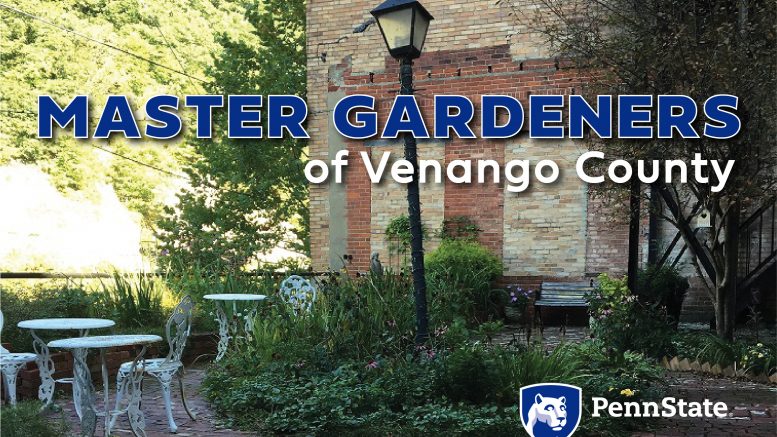A gardener has many choices when it comes to mulch. This article covers the pros and cons of various types of organic, non-organic, and living mulches.
For some gardeners, applying mulch to garden beds in the spring is one of the most satisfying aspects of gardening. Why? Because in certain climates, fresh mulch means warmer days are ahead and soon fall-planted bulbs and cool season edibles will emerge, thus signaling another gardening season has begun!
In landscaped beds, mulch adds texture to and highlights the edges of the beds and certain design features, it also draws attention to woody ornamentals thoughtfully and artfully installed in the bed. In a vegetable garden, mulch is applied to keep the plants and edibles clean and reduce erosion by covering the soil. Mulch also helps to conserve soil moisture, moderate soil temperature, and suppress weeds in all types of gardens.
There are various types of mulch available to the gardener. While the decision tree is not endless, it is larger than it was a few short decades ago. Gardeners are now faced with decisions such as what type of mulch to purchase; organic, synthetic, or living? Dyed mulch or natural? By the bag or in bulk? Free from my local municipality? Cost and time spent applying the mulch should also be evaluated. Where is the mulch coming from? For example, from a local nursery or garden center, from a big-box store or a hardware store, or a farm and garden store? Even some grocery stores now carry mulch.
If the local municipality does offer free, bulk mulch/compost, the natural materials in the product may include pesticide (herbicide, insecticide, fungicide) residues. Is this acceptable?
Given the vast assortment of mulches, the purpose of this article is to survey the types of mulches available and considerations when deciding upon which mulch best suits the intended purpose.
Organic Mulches
Shredded bark, bark chips, pine needles, compost, rice hulls, various nutshells, shredded leaves (intact leaves may form a mat that prevents oxygen and water movement and may stymie beneficial biological activities), straw, and cardboard are all organic mulches. Plastic sheeting is also available in a biodegradable form. However, it may take up to three years for this plastic sheeting to completely decompose and during that time, the remaining pieces of sheeting may be visible in the garden.
In addition to conserving water, moderating soil temperature, and suppressing weed growth, organic mulches improve soil health as they decompose. Since organic mulches decompose over time, they must be reapplied from time-to-time. Prior to adding a new layer of organic mulch, the old mulch may be removed or, in the case of vegetable gardens, in particular, may be incorporated into the soil. Mulch removal in an ornamental bed is important because the mulch layer should be limited to three to four inches deep. A mulch layer greater than three to four inches deep may threaten plant vigor by reducing the amount of oxygen and water available to the plant.
Free mulch may be available from local municipalities. One potential drawback in using these mulches is not knowing if any type of pesticide was applied to the grass, shrubs, trees, or other vegetative matter included in the mulch as these mulches are rarely tested.
Follow this link for a short video of a tub grinder making mulch:
Tub Grinder Making Mulch – YouTube Video (https://www.youtube.com/watch?v=ej63698tmZ4)
In instances where too much mulch has been applied to trees, these mulch volcanoes are a serious concern and have been the topic of many articles. I ncluded here are articles from the Pennsylvania State University and the Ohio State University; both are land-grant universities and are tasked with providing research-based information to the general public. Mulch Volcanoes are Erupting Everywhere! (https://extension.psu.edu/mulch-volcanoes-are-erupting-everywhere) written by Penn State Extension Educator Sandy Feather and Treemergency: Mulch Volcanos are Erupting in Landscapes! (https://bygl.osu.edu/index.php/node/1494) written by Joe Boggs of Ohio State University Extension for the Buckeye Yard & Garden on-Line publication. Both referenced articles include mulch-related photographs: mulch volcanoes, tree and moat, girdling stem root, and an image of the proper way to mulch a tree/shrub or vegetable.
Organic mulches for vegetable gardens and edible landscapes may include salt hay (no seeds), straw (fewer seeds), and hay (seed heads intact). In addition, paper mulch and, as mentioned above, biodegradable plastic sheeting is also available for vegetable gardens and edible landscapes.
Synthetic Mulches
Rocks, gravel, plastic sheeting, woven landscape fabric are examples of synthetic mulches. Plastic sheeting and woven landscape fabric may be installed directly on the soil and subsequently covered with an organic mulch for aesthetic reasons. Plastic sheeting and woven landscape fabric create impermeable and semi-permeable (respectively) barriers. These barriers prevent worms, water, and soil microbes from freely traveling throughout the soil. Limiting this movement interferes with the normal and customary biological soil activities. Over time, these barriers will increase soil compaction and form a secondary barrier of living roots above and below the inorganic barrier itself. These barriers, a combination of living and synthetics, can become very difficult to remove. Rocks and gravel absorb heat during warm days and can transfer the heat to the soil. The increase in soil temperature and reduced soil moisture may harm beneficial insects and microbes living in the soil. Synthetic mulches are often more expensive than organic; however, they generally have a longer life span than organics and do not need to be replaced as frequently.
Living Mulches
Living mulches offer an outstanding opportunity for gardeners to build soil health below the ground and enhance design aesthetics above the soil line. Living mulches are particularly useful around fruit trees. Crimson clover, borage, yarrow, lemon balm, and even kale can be used to create pollinator-friendly living mulches. As these plants grow, their leaves shade the soil and their roots create air and water pockets, necessary elements for good plant health.
In addition to adding select herbs as living mulch around fruit trees, native plants can also be designed into landscaped beds as living mulch. As noted in Living Mulch https://edgeofthewoodsnursery.com/living-mulch-part-one-an-ecological-alternative-to-wood-mulch.) (Part One) on the Edge of the Woods website, “… by using native plants to create plant communities in your landscape, your gardens will be more attractive and hospitable to songbirds, butterflies, bees, pollinators, and other creatures.”
Dyed Mulches
According to an article by Ruppert Landscape, The Evolution of Hardwood Mulch
(http://www.ruppertlandscape.com/evolution-hardwood-mulch/), dyed mulch became popular in the 1960s. Dyed mulch can be found in a range of colors and textures. In answering a query about colored bark mulch (https://ag.umass.edu/home-lawn-garden/fact-sheets/colored-bark-mulch), the University of Massachusetts Amherst states that dyed bark is not toxic, but there are considerations when opting to apply dyed mulch to ornamental beds. This mulch is rarely used in gardens growing edibles.
The wood used in dyed mulch is frequently recovered from used pallets and construction and demolition (C&D) sites. From a production perspective, the cost of using recycled wood, rather than fresh wood, for dyed mulch is significant. Recycled wood is less expensive than fresh wood and dried wood readily absorbs the dye while fresh wood does not. However, determining if recycled wood from C&D sites and used pallets has been treated with Chromated Copper Arsenate (CCA) or used in the transport of toxic materials is nearly impossible. Much of the recycled wood collected from C&D sites and old pallets dates to pre-2003. This is relevant because in late 2002, a law was passed preventing the lumber industry from using CCA to treat lumber, effective January 1, 2003. Lumber produced beginning in 2003 was treated using a process that does not include arsenic.
The dye used in black mulch is derived from carbon-based material and the dye used in red mulch is derived from iron oxide. The ingredients in these two forms of dye are not considered to be toxic to plants. However, according to the University of Massachusetts article, if colored mulch is preferred for a landscape, every effort should be made to determine the origin of the wood used. The carbon-based dye is similar to that used in cosmetics and ink and may lose its color when exposed to water, e.g., rain and irrigation, over time.
Summary
In summary, the three primary benefits of applying mulch to landscape and edible gardens are weed suppression, soil moisture retention, and temperature moderation. Organic mulches decompose over time and may need to be refreshed and add organic matter to the soil as they decompose. Synthetic mulches may not need to be refreshed and do not add any organic matter to the soil. Synthetic mulches may compact the soil and reduce microbial and worm activities required for healthy soil biology. Dyes used in producing shredded mulch are not toxic to the plants. However, the recycled wood (from old pallets and C&D sites) may contain CCA. In 2003, CCA was prohibited in the manufacturing of pressure-treated lumber. Finally, more mulch is not always better for the plants. Mulch volcanoes represent a true threat to the health of trees and should be avoided. Mulch applied around trees should be no more than two to four inches deep and should be applied three to four inches from the trunk of the tree and extend outward to the drip line.
Author:
Diane Diffenderfer
Master Gardener Coordinator
Expertise:
- School & Community Gardens
- Vegetables































